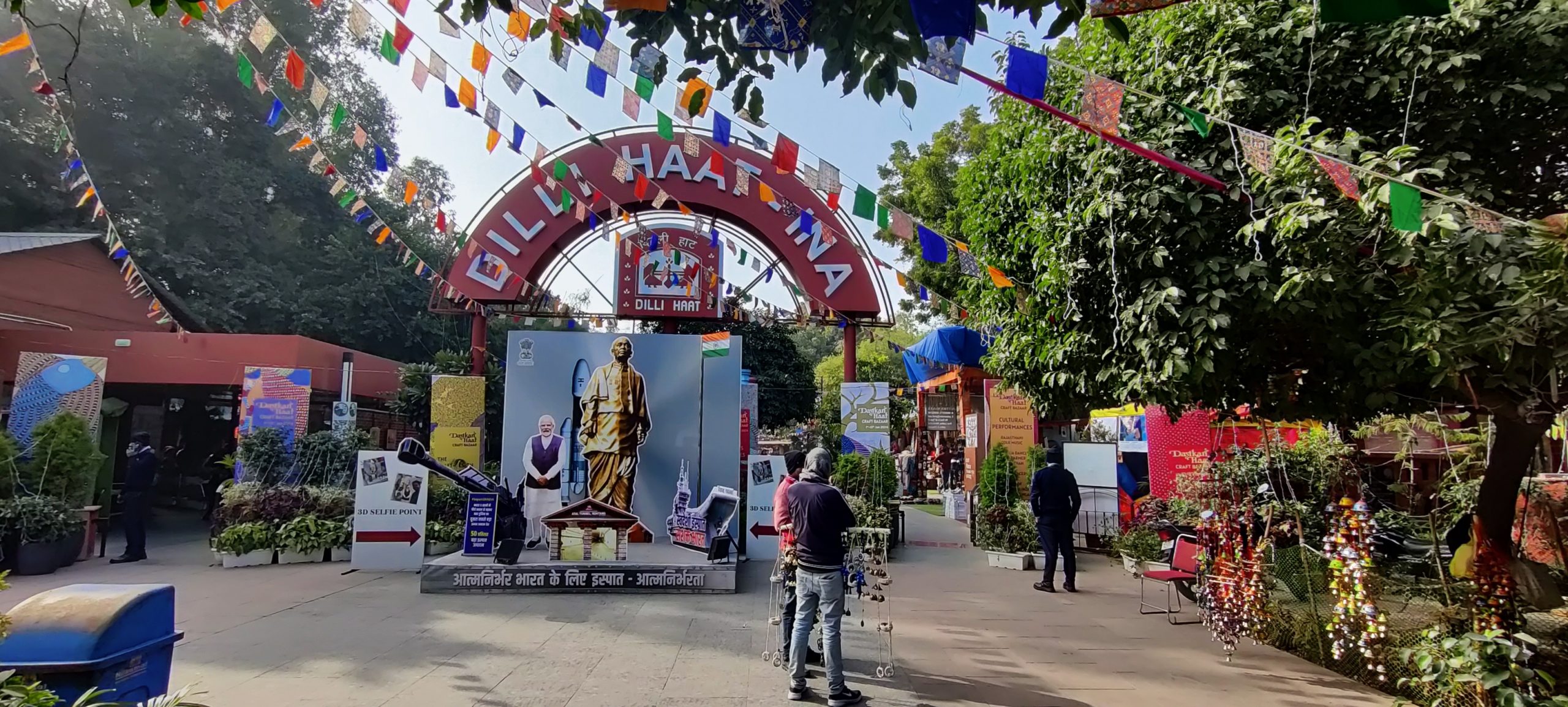
The Dastkari Haat Samiti’s 38th Annual Crafts Bazaar has taken centre-stage at Dilli Haat.
Artisans from across the country are participating with 190 stalls showcasing traditional art and craft at the event, which is dedicated to the preservation of India’s crafts heritage and sustaining the livelihoods of people associated with it.
Aside from crafts, there were lively cultural performances including Rajasthani folk music, the energetic Kalbelia dance from Barmer in Rajasthan, and the rhythmic Chaau dancers from West Bengal. These performances added extra spark to the lively atmosphere.
Embodying the ethos of cultural preservation, the bazaar stands as a dedicated effort to sustain the livelihoods of those embedded in India’s diverse crafts heritage.
At the heart of the bazaar’s offerings lies an assortment of captivating and diverse crafts, including the mesmerising ‘leheriya’ (traditional style of dyeing in Rajasthan), intricately designed jewellery, artisanal stationery, and the timeless allure of ceramic and terracotta. This amalgamation of skill, tradition, and creativity has left visitors enchanted, offering a window into India’s rich and vibrant cultural legacy.
For Owais Ahmad, 30, the event is a perfect platform to exhibit the remarkable talents of artisans hailing from the picturesque valley of Kashmir. His stall offers a wide array of shawls, each painstakingly crafted with meticulous handwork, serving as a testament to the region’s rich artisanal heritage and cultural finesse.
The event showcases a diverse array of crafts from every state, offering a rich tapestry of artistry from across the nation. Each state presents a unique craft, ranging from leaf printing on textiles from Gujarat, ‘leheriya’ from Rajasthan to jute products from Maharashtra, and cane and bamboo from Assam, among others.
This beautiful assortment includes handcrafted mura from West Bengal, bamboo leaf from Madhya Pradesh, and mud-work and mirror artistry from Gujarat.
“We aim to create a platform that unites artisans from diverse corners of our country, allowing them to collectively represent the rich tapestry of India’s traditional crafts. Our objective is to provide space for underprivileged artisans, who often lack opportunities within their own communities, to exhibit their exquisite artistry. Furthermore, we have arranged workshops catering to children seeking to explore various craft forms,” said Charu Verma, senior project head of Dastkari Haat Samiti.
Chitrikar lauded the exhibition for providing a platform that not only showcases their art but also facilitates sales.
“As artists, our expertise lies in creating art, but these platforms offer us the invaluable opportunity to reach potential buyers. I am truly grateful for this initiative,” he added.
Emphasising the broader impact, he mentioned, “The exhibition has made good sales, drawing artists from different places to sell their art. This not only helps us make money but also lets us meet other artists to share ideas and inspire each other. Basically, the exhibition has been really important in helping art and artists move forward. It provides chance to make money and also gives us a place to come up with creative ideas.”
“Our family has been in this business for three generations, and I’ve personally been setting up my stall here since 2008,” he remarked. Discussing the impact of the pandemic, Gansham highlighted a noticeable decline in sales.
“The COVID-19 pandemic has had a significant impact on our business. With more people choosing to shop at established stores, our sales have taken a hit,” he lamented. Despite the hurdles, Gansham remained hopeful, aiming for sales figures of Rs 1 to 2 lakh despite ongoing challenges.
“We are proud to be associated with 1,200 individuals from various regions, including Uttarakhand, Uttar Pradesh, Delhi NCR, and West Bengal,” Kapoor mentioned.
Kapoor said that the significance of exhibitions like these is in providing a vital platform for artists to showcase their creations and gather meaningful feedback from the public.
“Our products have garnered praise for their use of high-quality raw materials and thoughtful designs,” added Kapoor.
While the event garners recognition as a success by many, some individuals have observed relatively sluggish sales compared to previous years.
Richa Kaur, a visitor, expressed her observations, noting that the footfall of buyers pales in comparison to the number of visitors.
“The shift towards e-commerce culture might have contributed to this phenomenon, where people are inclined to spend significantly more on items for added convenience and comfort, despite the accessible and reasonably priced nature of the crafts available at the events like this,” Kaur said.
Jaya Jaitly, President of Dastkari Haat Samiti, told Patriot, “I have been organising these exhibitions for many years now. I have been holding exhibitions at Delhi Haat for 30 years. Additionally, I run these bazaars across India in different locations. I have noticed that when artisans receive good money and recognition, they do not leave their craft.
“They offer a lot of variety. They handcraft items that are very unique, imparting their identity and indigenous knowledge into these products. This also educates people about different cultures. There are many government crafts bazaars, but they feature the same artisans. We provide space to different artisans,” she said.
Rival leagues trigger players’ suspensions and a legal battle in Indian golf, for now
Former Delhi CM Kejriwal criticises Centre, Delhi govt over worsening air pollution, alleges AQI manipulation
Delhi Police raids Nangloi unit producing fake engine oil, seizes over Rs 1 crore worth…
Mukesh Sharma reimagines digital components as living matter in his solo exhibition ‘Decoding Digital DNA’
Nine accused were arrested in coordinated raids as police uncovered organised networks supplying mule bank…
Nearly 1.57 lakh PUC challans issued in two months as Delhi steps up GRAP enforcement…